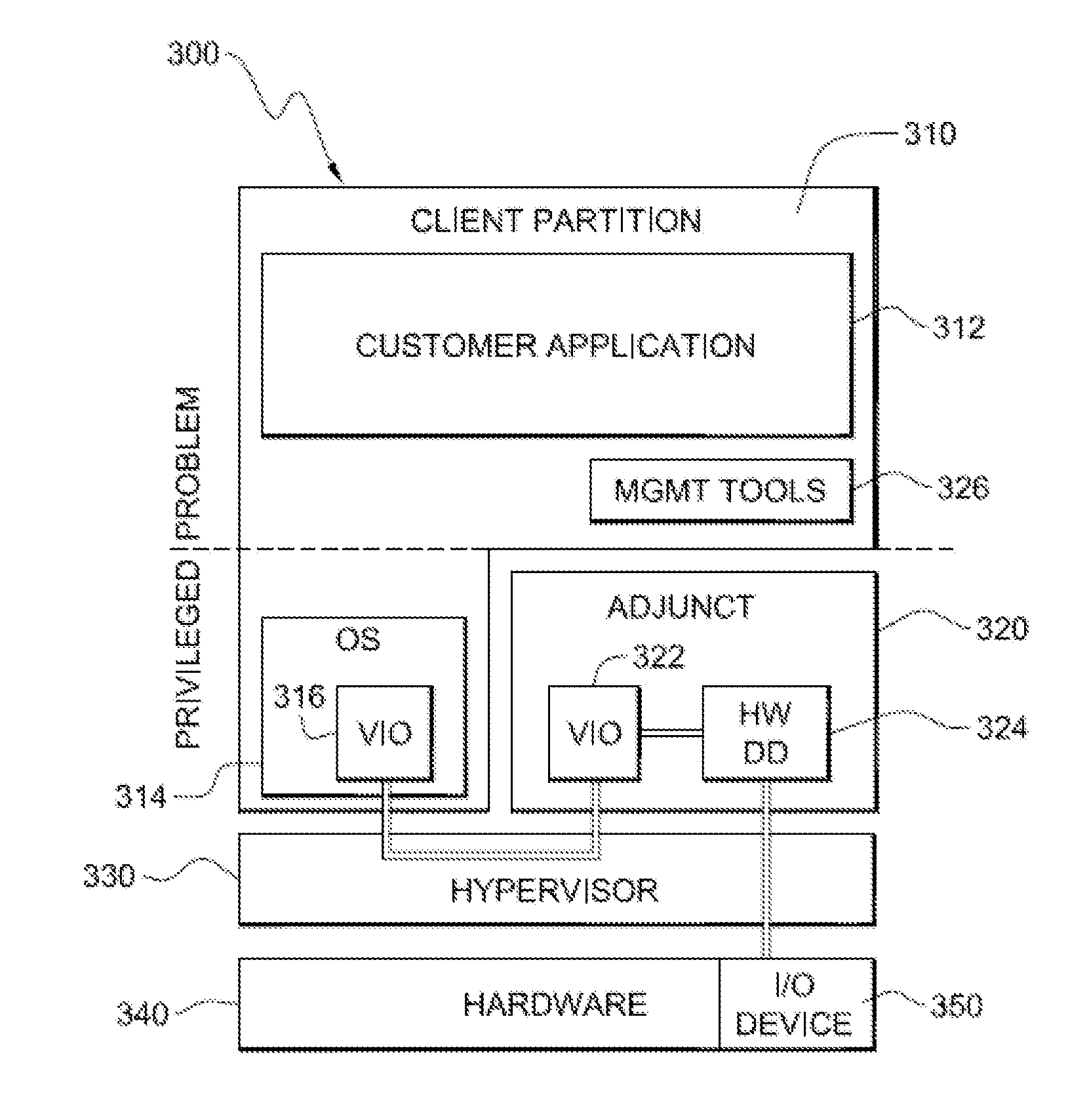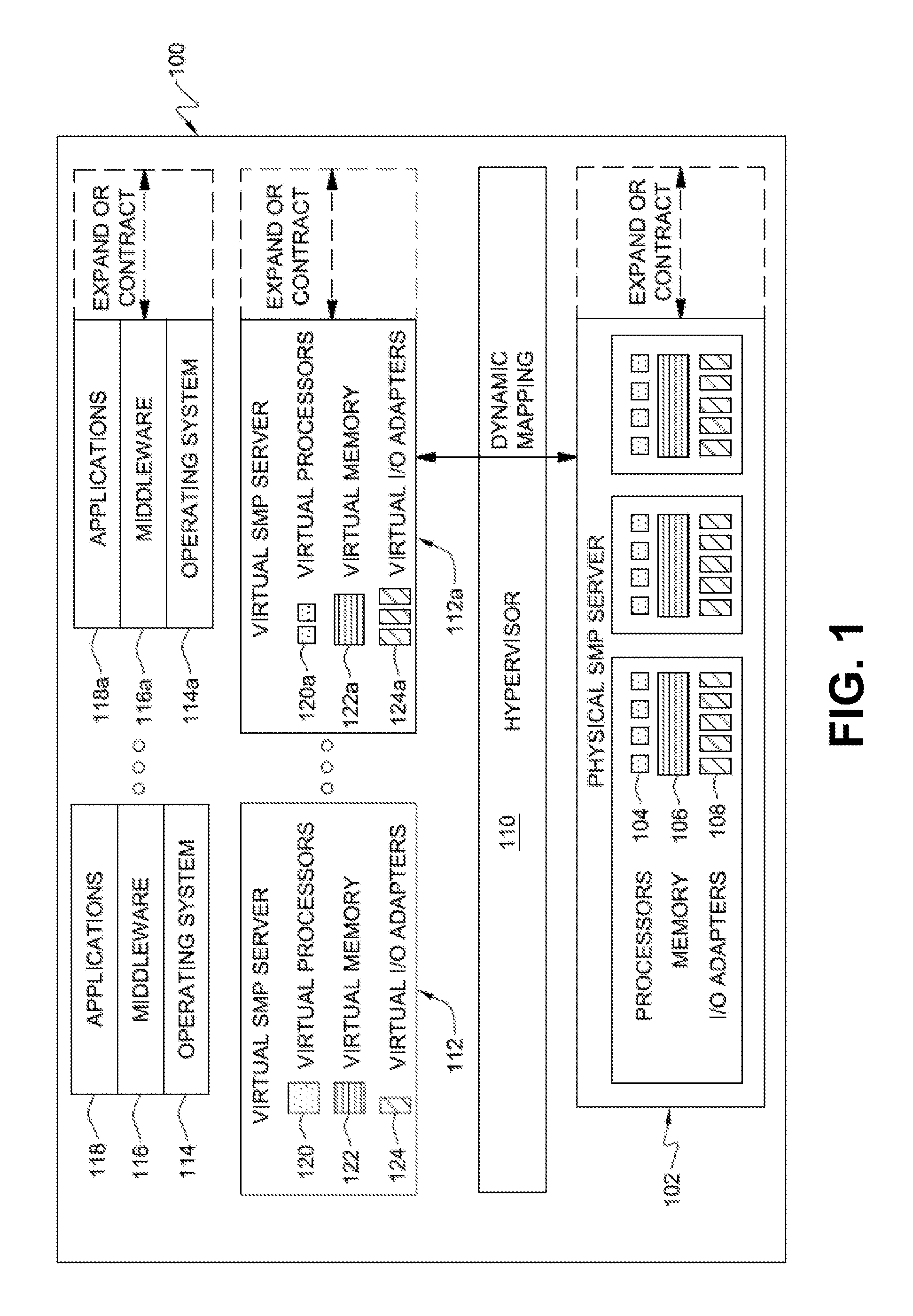PRESERVING TRAFFIC CLASS PRIORITY QoS WITH SELF-VIRTUALIZING INPUT/OUTPUT DEVICE
a traffic class and priority technology, applied in the field of data processing, can solve the problems of requiring relatively high overhead, introducing excessive complexity and processing overhead to the hypervisor, and logically inefficiently, and achieve the effect of preserving qos prioritization
- Summary
- Abstract
- Description
- Claims
- Application Information
AI Technical Summary
Benefits of technology
Problems solved by technology
Method used
Image
Examples
Embodiment Construction
[0028]Embodiments consistent with the invention selectively utilize frame wrapping to enforce QoS prioritization with a converged or multi-function self-virtualizing IO resource such as a converged SRIOV network adapter, e.g., to avoid conflicting priorities from frames associated with virtual functions for which ACLs are not enforced, thereby preserving QoS prioritization for lossless traffic classes.
[0029]In particular, traffic class priority QoS is preserved in a multi-function self-virtualizing IO resource that communicates data associated with first and second virtual functions that are respectively associated with first and second traffic classes, where at least the first traffic class supports QoS prioritization. QoS prioritization, in this regard, typically refers to a traffic class-based priority scheme that ensures desired bandwidth and communication performance for one or more classes, or types, of communications traffic. Traffic classes that typically support QoS priorit...
PUM
 Login to View More
Login to View More Abstract
Description
Claims
Application Information
 Login to View More
Login to View More - R&D
- Intellectual Property
- Life Sciences
- Materials
- Tech Scout
- Unparalleled Data Quality
- Higher Quality Content
- 60% Fewer Hallucinations
Browse by: Latest US Patents, China's latest patents, Technical Efficacy Thesaurus, Application Domain, Technology Topic, Popular Technical Reports.
© 2025 PatSnap. All rights reserved.Legal|Privacy policy|Modern Slavery Act Transparency Statement|Sitemap|About US| Contact US: help@patsnap.com



